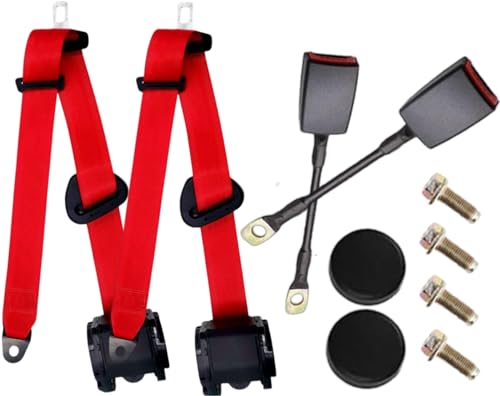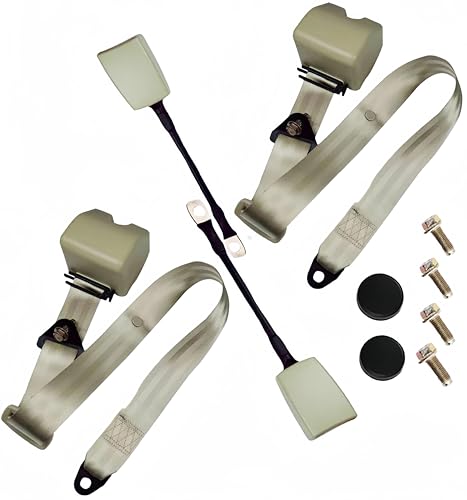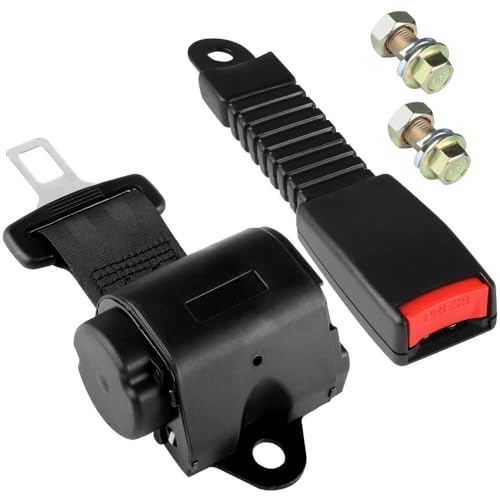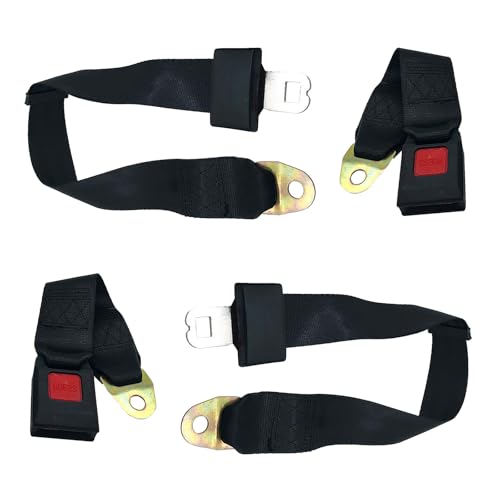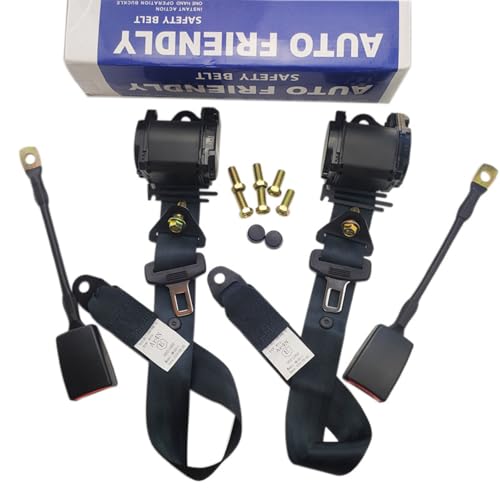Thinking of selling a car with a known issue can be stressful, especially when it involves a critical safety component like a seat belt. You’re likely wondering about the legal hurdles, potential liability, and whether it’s even possible to make the sale without getting into trouble. The uncertainty over regulations and the difference between a private sale and a dealership transaction can be confusing, leaving you searching for a clear, direct answer.
Selling a car with a broken seat belt is generally illegal and highly inadvisable. For licensed dealerships, it is often explicitly prohibited by state vehicle codes, as all safety equipment must be fully functional. For private sellers, attempting to sell a car with such a defect carries significant legal and liability risks, even in an “as-is” sale.
This guide provides a comprehensive analysis of the laws, risks, and practical steps involved when you need to sell a car with a broken seat belt. We will break down the critical differences in responsibility between private sellers and dealerships, explore your repair options, and answer the most common questions to ensure you can navigate the process safely and legally.
Key Facts
- It’s Generally Illegal: Most jurisdictions have safety regulations and vehicle codes that make it illegal to sell a vehicle unless its safety equipment, including all seat belts, is in proper working condition.
- Dealerships Have Stricter Rules: Consumer protection laws hold licensed dealerships to a higher standard. For example, California’s Vehicle Code explicitly forbids a dealer from selling a car with defective safety equipment, a rule that cannot be waived.
- “As-Is” Is Not a Shield: Selling a car “as-is” typically does not protect a seller from liability for critical, known safety defects like a broken seat belt, especially if it leads to injury.
- Guaranteed Inspection Failure: A frayed, worn, or non-functional seat belt will almost certainly cause a car to fail its annual safety inspection (like an MOT in the UK), rendering it not roadworthy.
- Significant Liability Risk: A seller who knowingly sells a vehicle with a defective seat belt could face severe legal liability if an accident occurs and the faulty belt contributes to an occupant’s injuries.
Is Selling a Car with a Broken Seat Belt Illegal? The Direct Answer
Selling a car with a broken seat belt is generally illegal and highly inadvisable. For dealerships, it is explicitly prohibited by vehicle codes in many states, as all safety equipment must be functional. For private sellers, it carries significant legal and liability risks. This isn’t just a minor issue; it’s a matter of federal and state safety regulations that are in place to protect consumers and ensure vehicles on the road are safe. The core principle behind these laws is that critical safety equipment must be in proper working condition at the time of the vehicle sale.
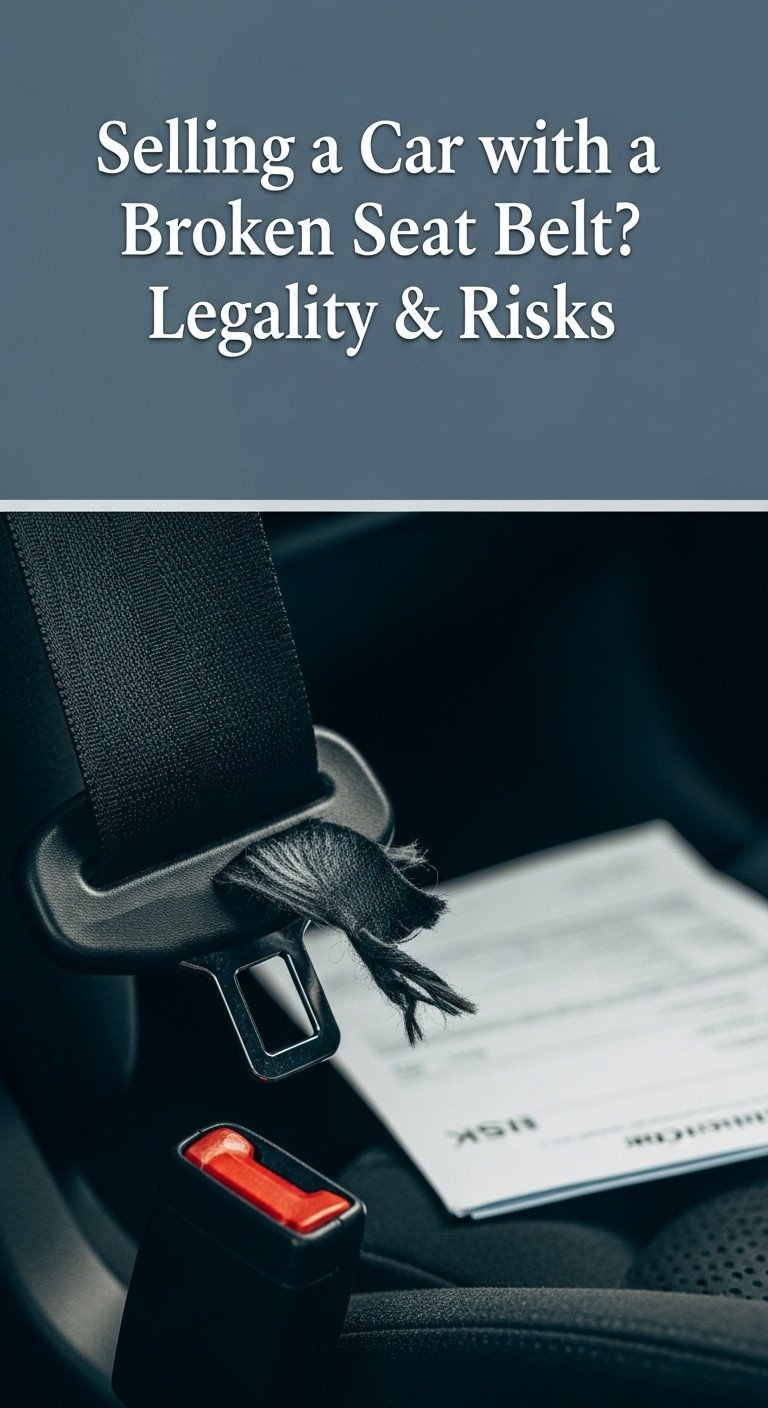
While the specific statutes can vary slightly by jurisdiction—the legal term for a state or area with its own set of laws—the overarching rule is consistent. A seller, and particularly a professional dealership, has a legal and ethical obligation to ensure that a vehicle’s safety features are not compromised. Trying to sell a car with a broken seat belt ignores this fundamental responsibility and can lead to serious consequences. But why is this rule so strict, and does it apply to everyone?
Why a Functional Seat Belt is Legally Non-Negotiable
A broken seat belt is not a minor defect; it’s a critical failure of a legally mandated safety system. Its primary function is to prevent death or serious injury, which is why laws are so stringent about its operational status during a sale. Seat belts are a cornerstone of vehicle safety, a fundamental feature designed to protect occupants during a collision. According to safety authorities like the NHTSA, their proper function is paramount to vehicle safety standards. Any damage, whether to the belt’s fabric (webbing), the buckle, or the retracting mechanism, fundamentally compromises its ability to perform this life-saving role.

The consequences of a non-functional seat belt extend beyond the immediate safety risk and have significant legal and practical implications. Understanding these consequences makes it clear why you can’t simply overlook the problem when you decide to sell a car with a broken seat belt.
Here’s what makes a broken seat belt a deal-breaker:
* Compromised Occupant Safety: This is the most critical point. A damaged belt cannot properly restrain a person in a crash, drastically increasing the risk of severe injury or death.
* Automatic Inspection Failure: In regions with mandatory vehicle safety inspections, such as the UK’s MOT test, any visible damage, fraying, or malfunction in a seat belt results in an automatic failure. This means the car is not legally roadworthy.
* Illegality of Driving: Beyond the sale itself, it is often illegal to drive a vehicle with a broken seat belt. Laws generally mandate that if a car was manufactured with seat belts, they must be maintained in a functional condition and worn by occupants.
* Exposure to Legal Liability: If you sell a car with a known safety defect and an accident occurs where that defect causes harm, you could be held liable for the resulting injuries, leading to costly lawsuits.
Quick Fact: Did you know that seat belts are considered a primary reason for the dramatic decrease in traffic fatalities since their mandatory implementation?
Modern systems often include advanced components like pre-tensioners, which use a small charge to rapidly tighten the belt in a collision, and complex retractors that lock the belt in place. Damage to these parts is not a simple fix and underscores why professional assessment is crucial.
The Legal Maze: Dealership vs. Private Seller Responsibilities
Dealerships have a strict legal duty to sell cars with functional safety equipment. Private sellers have more leeway with “as-is” sales, but this does not eliminate the risk of liability for non-disclosure of known, critical safety defects. The legal landscape shifts significantly depending on who is selling the vehicle. This distinction is one of the most important factors when considering whether you can sell a car with a broken seat belt.
Consumer protection laws are designed to hold professional sellers to a much higher standard than individuals. This is because buyers place a greater level of trust in a licensed dealership to provide a safe and reliable vehicle. A private seller, on the other hand, operates with fewer regulations, but that doesn’t mean they are free from all responsibility.
To clarify these different obligations, here is a direct comparison:
| Responsibility | Dealership Sale | Private Sale |
|---|---|---|
| Safety Equipment Mandate | Legally Required to ensure all safety equipment is in proper working condition. | No explicit mandate, but seller can still be liable for non-disclosure of known defects. |
| “As-Is” Clause | Generally cannot use an “as-is” clause to waive responsibility for critical safety defects. | Can sell “as-is,” but it may not be a complete defense against liability for safety issues. |
| Legal Standard | Held to a high standard under consumer protection laws. | Held to a lower standard, but must act in good faith and not commit fraud. |
| State Law Example | In California, it is explicitly illegal for a dealer to sell a car with a faulty seat belt. | The seller should disclose the defect in writing to mitigate risk. |
As these points show, the law provides a robust safety net for consumers buying from dealerships. For instance, an analysis of the California Vehicle Code shows just how serious this is:
“California’s Vehicle Code requires that you do not sell or offer for sale, a vehicle unless all of its safety equipment is in proper working condition. This requirement cannot be waived by a dealer or buyer, even if the defects are disclosed.”
Similarly, Georgia law implies that functional seat belts are required for the sale of any vehicle manufactured after 1964. While private sellers have more flexibility, the risk of a lawsuit remains, especially if an injury occurs.
Pro Tip: For private sellers, written disclosure of any known defects is your best protection, even in an ‘as-is’ sale.
The Higher Standard for Dealerships
For dealers, functional safety equipment is a non-negotiable condition of sale, overriding any “as-is” clauses. This is a cornerstone of consumer protection law in the automotive industry. When you purchase a vehicle from a licensed dealership, you are entering a transaction where the law imposes a greater duty of care on the seller. They are considered experts, and buyers are entitled to rely on that expertise to ensure the vehicle is fundamentally safe.
This heightened responsibility is not just a suggestion; it’s codified in state laws. The principle found in the California Vehicle Code is a prime example of this protective legal framework.
According to established vehicle codes, a licensed dealer is prohibited from selling a vehicle unless all of its safety equipment is in proper working order. This legal obligation is absolute and cannot be signed away or waived by the buyer, even if the dealer points out the broken seat belt.
This legal precedent exists to prevent consumers from being put in a dangerous position, either through ignorance or by being pressured into accepting an unsafe vehicle. If you are a buyer and discover a dealer sold you a car with a broken seat belt, you likely have strong legal recourse. The sale itself may be deemed illegal, and the dealership would be responsible for the necessary repairs or other remedies.
Navigating “As-Is” Sales as a Private Seller
For private sellers, the best practice is to either fix the seat belt before selling or fully disclose the defect in writing to the buyer. While a private transaction doesn’t carry the same stringent legal requirements as a dealership sale, the phrase “as-is” is not a magical shield that protects you from all liability. An “as-is” sale means the buyer agrees to accept the vehicle in its current condition, with all its existing faults, whether they are known or unknown.
However, this principle has its limits, especially when it comes to critical safety equipment. If you knowingly conceal a dangerous defect like a broken seat belt and the new owner gets into an accident, you could still be sued for negligence or fraudulent misrepresentation. Honesty and transparency are not just ethical—they are your best legal protection.
To protect yourself when you sell a car with a broken seat belt as a private individual, follow these best practices:
* Disclose in Writing: The most crucial step is to clearly and unambiguously state the defect in the bill of sale. For example, write “Buyer acknowledges that the rear driver-side seat belt is frayed and non-functional and must be repaired before use.”
* Have the Buyer Acknowledge the Defect: Ensure the buyer signs or initials next to the specific disclosure statement in the sales contract. This creates a clear record that they were informed and accepted the vehicle in that condition.
* Recommend Repair Before Use: Ethically and to further limit liability, advise the buyer to have the seat belt professionally replaced before transporting any passengers in that seat.
* Adjust the Price Accordingly: Reflect the cost of the needed repair in the vehicle’s selling price. This demonstrates good faith and shows that you are not trying to profit from a hidden defect.
Remember, transparency isn’t just ethical—it’s your best legal defense.
What to Do if Your Seat Belt is Broken: Repair vs. Replace
Minor seat belt issues like twists can sometimes be fixed at home, but any physical damage like fraying or a malfunctioning retractor requires professional replacement to guarantee safety and legal compliance. If you’re looking to sell a car with a broken seat belt, the smartest and safest option is to address the problem before listing the vehicle. This not only makes the car legally saleable but also increases its value and appeal to potential buyers.
You have two main paths: attempting a DIY fix or seeking professional service. The correct choice depends entirely on the nature of the problem. Some minor issues are simple to resolve, while others pose significant safety risks if not handled by a qualified technician.
Here is a step-by-step guide to help you decide the best course of action.
- Look for Twists: This is the most common and easily fixable issue. Pull the seat belt webbing all the way out from the retractor. Carefully un-twist the belt until it is perfectly straight, then allow it to retract slowly back into the housing.
- Clean the Belt and Buckle: Sometimes, dirt, grime, or sticky residue can prevent the belt from retracting smoothly or the buckle from latching properly. Use warm, soapy water and a cloth to wipe down the entire length of the belt. Clean out any debris from the buckle mechanism with a small brush or compressed air.
- Check the Retractor Spring (Advanced): If the belt won’t retract, the spring inside the mechanism may need to be reset. This often involves removing a plastic panel to access the unit. However, this should only be attempted if you have technical know-how and the vehicle does not have pre-tensioners.
When to Call a Professional
While some fixes are straightforward, many seat belt problems demand professional attention. Attempting to repair major issues yourself can lead to catastrophic failure in an accident. Always consult a qualified mechanic if you encounter any of the following:
* Frayed, Worn, or Cut Webbing: Any physical damage to the belt fabric itself is a red flag. The material has lost its structural integrity and must be completely replaced.
* Pre-Tensioner Issues: If the car has been in a minor accident, the seat belt’s pre-tensioner may have deployed. This is a one-time-use safety device and the entire seat belt assembly must be replaced by a professional.
* Broken Retractor or Buckle: If the internal locking mechanism in the retractor is broken or the buckle will not latch or release correctly, the entire unit needs to be replaced.
* Any Warning Lights: If a seat belt or airbag warning light is illuminated on your dashboard, it indicates a fault in the safety restraint system that requires professional diagnosis.
Quick Fact: Seat belt pre-tensioners often contain a small explosive charge to tighten the belt in a crash, which is why they should only be handled by professionals!
Ultimately, safety must always be prioritized over cost. Investing in a professional repair ensures the job is done correctly, keeping the future occupants of the vehicle safe and keeping you compliant with the law.
To make this crucial repair easier, investing in a high-quality seat belt replacement kit or assembly can ensure you have the right parts for the job.
FAQs About can you sell a car with a broken seat belt
Is a frayed seat belt considered legally “broken”?
Yes, absolutely. A frayed, worn, faded, or cut seat belt is considered legally “broken” and unsafe. The webbing’s structural integrity is compromised, meaning it cannot withstand the immense forces of a collision. For legal and safety inspection purposes, any visible damage to the belt itself renders the entire component non-functional and in need of immediate replacement.
How much does it typically cost to replace a seat belt?
The cost to replace a seat belt can vary significantly based on the vehicle’s make and model, and whether it’s just the belt or the entire assembly including the retractor and pre-tensioner. While costs can range widely, safety should always be the primary consideration. It is a necessary investment to ensure the vehicle is safe and legally compliant for sale.
What if the car was manufactured before seat belts were mandatory (pre-1968)?
If a vehicle was originally manufactured before federal law mandated seat belts (generally pre-1968), there is typically no legal requirement to have them installed for a sale. The laws apply to equipment that the vehicle was manufactured with. However, for safety reasons, installing seat belts in a classic car is always highly recommended.
Can I sell a car if the seat belt is just missing its buckle?
No, a seat belt without a buckle is completely non-functional and is therefore considered broken. The buckle is an essential part of the restraint system. Selling a car in this condition would carry the same legal and liability risks as selling one with a frayed or non-retracting belt. The entire seat belt unit would need to be replaced before the sale.
What are my rights if I bought a car from a dealer and then discovered a broken seat belt?
If you purchased a car from a licensed dealership and later discovered a broken seat belt, you have strong consumer rights. The dealership should not have sold the vehicle in that condition. You should contact them immediately and insist they perform the repair at their cost. If they refuse, you may have grounds for legal action, as they likely violated state vehicle codes and consumer protection laws.
Final Summary: Key Takeaways for Buyers and Sellers
Navigating the sale of a vehicle with a safety defect can be daunting, but the rules surrounding seat belts are clear: safety and legality are paramount. Whether you are selling or buying, understanding your obligations and rights is essential for a secure and successful transaction. Attempting to sell a car with a broken seat belt is a risky proposition that is best avoided by addressing the issue head-on.
When you’re ready to make a decision, remember these critical points:
* Safety and Legality Come First: It is generally illegal, particularly for dealerships, to sell a vehicle with a non-functional seat belt. This is a critical safety failure, not a minor cosmetic flaw.
* Sellers: Fix or Disclose: For any seller, the best course of action is to have the seat belt professionally repaired before listing the car. If you are a private seller and cannot make the repair, you must fully disclose the defect in writing on the bill of sale to mitigate your liability.
* Buyers: Inspect Thoroughly: As a buyer, always check every single seat belt in a vehicle before finalizing the purchase. Pull them out fully, check for damage, and ensure they retract and buckle correctly. Do not take a seller’s word for it—verify for yourself.
By following these guidelines, you can ensure that any vehicle transaction you’re a part of is handled responsibly. Prioritize safety and transparency in any vehicle transaction to protect yourself and others on the road.
Last update on 2025-10-24 / Affiliate links / Images from Amazon Product Advertising API
